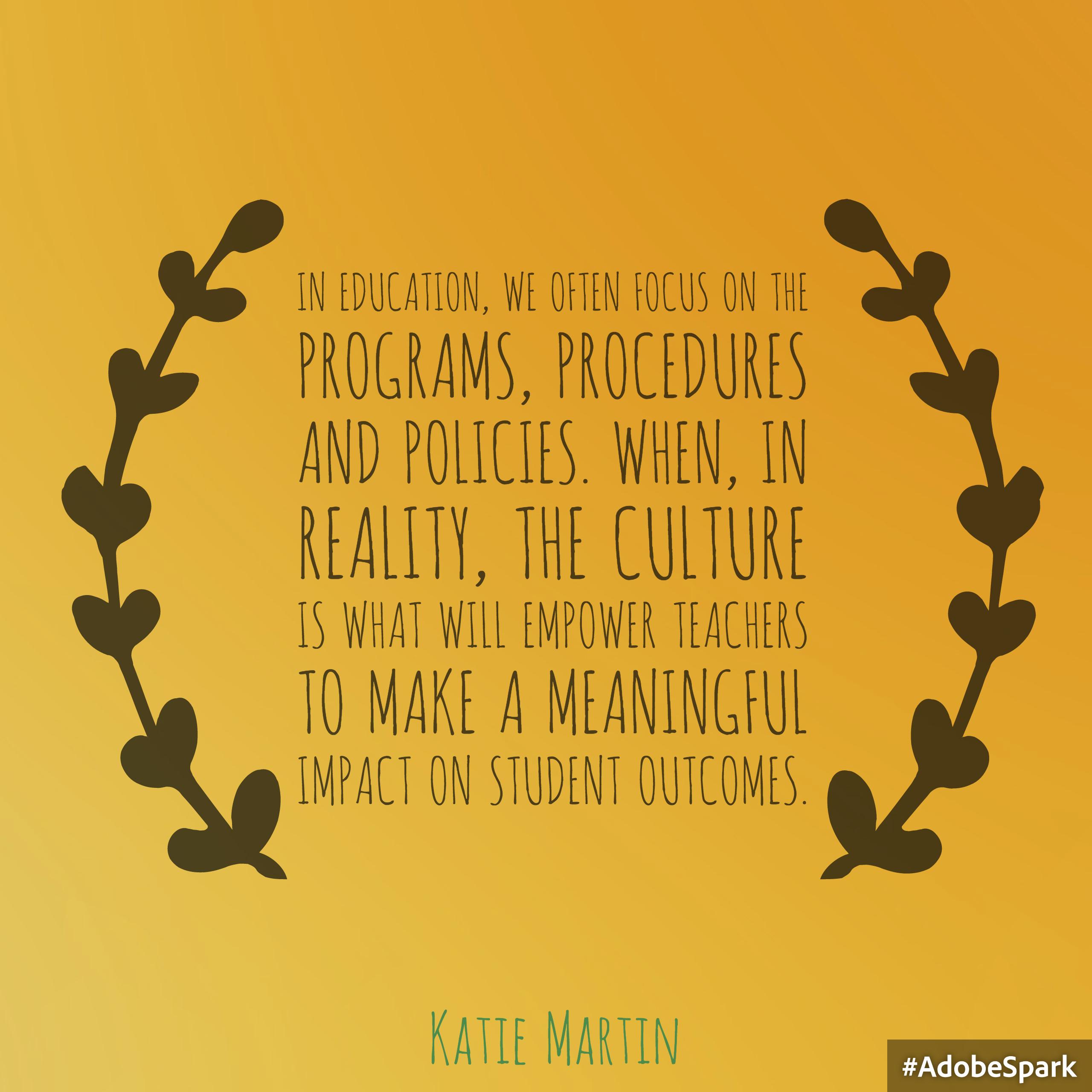I read this article recently, Workplace Culture is Everything: 20 Ideas For Building a Thriving Team. In the article the author describes two scenarios of workplace culture–one where workers are stressed and burned out and another where workers are empowered and inspired to create and grow. I love this description of a powerful culture:
There is nothing more invigorating to the human spirit than working towards a common goal with like-minded friends who are equally dogged and passionate. It doesn’t just give us meaning and fulfillment; it inspires us to create those same feelings for others.
This made me think about the impact that the culture had on my husband’s teaching and learning practices in two different schools and systems. Four years ago Matt was finishing his 10th year of teaching and was so frustrated by the mandates and bureaucratic systems, which were compounded by the lack of resources and support. He was unhappy and not as effective as he wanted to be. He had become part of an ineffective system- moving groups of uninspired and disconnected kids through school.
Just when he was ready to move on and leave education, he got the opportunity to teach at High Tech High Media Arts and move our family back to San Diego. I was all for this plan although he was hesitant because he wasn’t sure he could live up to the reputation that the organization had. Thankfully, he decided to go for it.
Within that first month I saw him transform as an educator in such powerful ways. He was working harder than I have ever seen him work- visiting families of students, asking tons of questions and seeking feedback on new ideas, collaborating with his colleagues, designing projects, connecting with students in and out of class enthusiastically, and overall loving his job.
Four years later he continues to love his job and has become a leader and a model for new and better way of teaching. Two years ago he started The Wicked Soap Company in a pilot with Real World Scholars with his 10th grade chemistry students. Since they have made and sold lots of soap, improved and expanded their products and provided scholarships for fellow students with their proceeds. The class was just featured on the local news and recently was just recognized in this article 14 most Innovative Schools in America.
I highlight these accomplishments not only because I am proud of what he and his students have done, but more so to acknowledge that the culture of where he teaches has made a tremendous impact. This shift in his practice didn’t happen by chance. He became part of a culture, a shared way of doing things. The following factors are critical to the culture of learning and innovation that facilitated the change in his practices.
- High expectations with support and inspiration from colleagues and administration.
- Autonomy to take risks and create amazing opportunities for the students they teach.
- Emphasis on relationships to meet the needs of the learners and align school with the world in which they live.
So, what does this mean for you and your school?
We know that kids (and adults) learn better when learning has an authentic purpose, subjects are integrated, and the learner has agency and choice in the process. Because of this, project-based learning is BIG right now and rightly so. You might wonder–Is there professional learning to support PBL? Are there programs that provide resources? Are there models that teachers can see and use? The answer to all of these questions is yes. Yes, you can provide all of these things and support teachers in the process to develop great projects, and you should, but it’s not enough.
I have seen some amazing examples of how project-based learning changes how kids learn in school when educators embrace integrated, authentic ways of learning in school but I have also seen these ideal methods added on to traditional schooling that rarely changes how kids learn. If the culture doesn’t foster creativity, risk-taking and innovation, project-based learning (or any transformative initiative) can easily become another thing added on a teacher’s plate. In education we tend to focus on the programs, procedures and policies. When, in reality, the culture is what will truly empower teachers to make a meaningful impact on student outcomes.



Reblogged this on Herding cats…and small children and commented:
Says what I think exactly
http://musicbrainz.org/user/vilstruphoff2
Everything has changed. Reevaluating how we used to do things compared to now is a must in today’s world. It seems to be a whole new education for 2020.